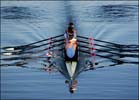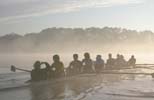Deep Sea Sustainable Ecotourism
Sustainable tourism includes the responsible use of natural funds for amusements. This includes eco-friendly boating, scuba-diving, fishing, and tourism.
Ecotourism is defined as leisure travel that provides tourists with an edifying and exploratory practice call difficult and attractive ecosystems and their associated cultures and traditions. The idea of ecotourism began in the late 1980's and enlarged in popularity in 2002 through the United Nations "International Year of Ecotourism." According to ecological and other organizations, ecotourism should have a minimal impact on both the location and the culture. Ecotourism should tell tourists about what's desired to continue the environment they're visiting, and should also help local populations understand the meaning and value of their home. Ecotourism can also help cultivate a sense of environmental stewardship by encouraging travelers to be mindful of wasting resources and polluting the environment. Ecotourism can also help local economies by produce income and jobs, which further promote the local population to preserve its environment.
Rowing

Rowing is a sport in which athlete race alongside each other on rivers, lakes or on the ocean, depending upon the type of race and the discipline. The boats are boost by the response services on the oar cutting edge as they are pressed beside the water. The sport can be both leisure, focus on knowledge the technique essential, and spirited where overall fitness plays a huge role. It is also one of the oldest Olympic sports. In the United States, high school and collegiate rowing is sometimes referred to as group.
Head races

Early spring (depending on local conditions). Boats begin with a rolling begin at intervals of 10-20 seconds, and are timed over a set distance. Head courses generally vary in length from 2,000 m to 12,000 m, though there are longer races such as the Boston Rowing Marathon. The oldest, and possibly most famous, head race is the Head of the River Race, originate by Steve Fairbairn in 1926 which acquires place each March on the river Thames in London, United Kingdom. Head racing was exported to the United States in the 1950s, and the Head of the Charles Regatta held each October on the Charles River in Boston, Massachusetts, USA is now the largest rowing event in the world. These processional races are known as 'Head Races', because, as with bumps racing, the best crew is awarded the title 'Head of the River'. It was not believed reasonable to run bumps racing on the Tideway, so a timed format was accepted and soon trapped on. Time trials are sometimes used to resolve who battle in an event where there is a limited number of entries, for example the be eligible races for Henley Royal Regatta, and "rowing on" and "getting on" for the Oxford and Cambridge Bumps races correspondingly.
Bumps races
Another type of race is the bumps race, as held in Oxford, Cambridge (recognized as the Lent Bumps and the May Bumps), amid the London medical and Veterinary schools on the Tideway and at Eton College and Shrewsbury School . In these races, crews start lined up along the river at set times, and all start at the same time. The aim is to catch up with the boat in frontage, and avoid being caught by the boat behind. If a crew overtakes or makes physical contact with the crew ahead, a bump is awarded. As a effect damage to boats and tackle is common during bumps racing. To avoid damage the cox of the crew being bumped may allow the bump previous to contact is really made. The next day, the bumping crew will start ahead of any crews that have been bumped. Bumps races take place over numerous days, and the positions at the end of the last race are used to set the location on the first day of the races the next year. Oxford and Cambridge Universities embrace bumps races for their respective colleges twice a year, and there are also Town Bumps races in both cities, open to non-university crews. Oxford's races are organised by City of Oxford Rowing Club and Cambridge's are organised by the Cambridgeshire Rowing Association.
Stake races
The stake design was repeatedly use in untimely American races. Competitors line up at the start, race to a stake, moored boat, or buoy some distance away, and return. The 180° turn involves mastery of steering. These races are trendy with spectators because one may watch both the start and end. Generally only two boats would race at once to avoid collision. The Green Mountain Head Regatta continues to use the stake design but it is run as a head race with an interval start. A similar type of racing is found in UK coastal rowing, where a number of boats race out to a certain point from the coast and then return fighting rough water all the way.
Visit the world's most exotic locations booking vacation rentals, holiday cottages, condo rentals and cabin rentals at thebestvillas.
 Deep Sea Crabs
Deep Sea Crabs